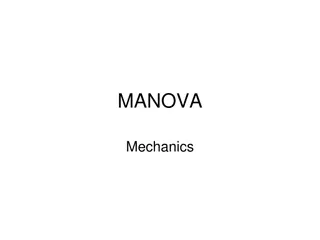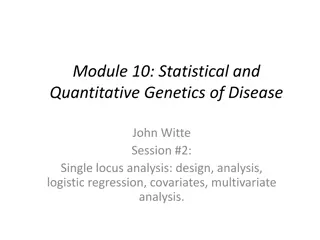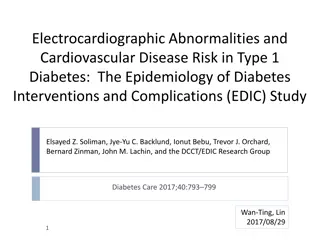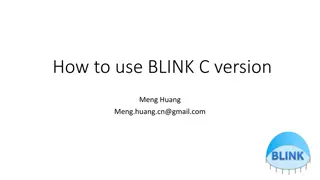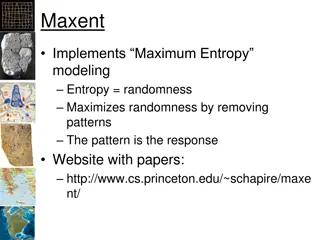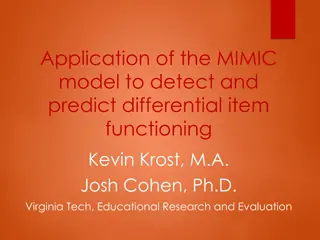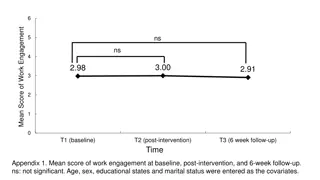Understanding MANOVA: Mechanics and Applications
MANOVA is a multivariate generalization of ANOVA, examining the relationship between multiple dependent variables and factors simultaneously. It involves complex statistical computations, matrix operations, and hypothesis testing to analyze the effects of independent variables on linear combinations
0 views • 16 slides
Statistical and Quantitative Genetics of Disease
This session covers single locus analysis in statistical and quantitative genetics, focusing on design, analysis, logistic regression, covariates, and multivariate analysis. It discusses approaches for analyzing DNA on cases and controls, modeling, and adjusting for covariates. The association analy
0 views • 36 slides
Maternal Work Hours and Adolescent Obesity: A Longitudinal Analysis
This study investigates the relationship between increased maternal work hours during childhood and adolescent obesity. It explores how maternal employment and income levels may impact the rates of adolescent obesity, utilizing data from the Panel Survey of Income Dynamics and Child Development Surv
0 views • 12 slides
Electrocardiographic Abnormalities and Cardiovascular Disease Risk in Type 1 Diabetes
This study examines the association between ECG abnormalities and incident CVD events in patients with type 1 diabetes, focusing on the prognostic significance in a population where CVD develops earlier. Major and minor ECG abnormalities were classified, with cardiovascular events such as myocardial
0 views • 16 slides
Guide on Using BLINK C Version for Genetic Analysis
This guide provides step-by-step instructions on how to effectively use the BLINK C version for genetic analysis. It covers tasks such as preparing input files, handling phenotype and covariates data, implementing GWAS using BLINK, transforming genotype data, compressing to BLINK binary format, conv
0 views • 9 slides
Understanding Maximum Entropy Modeling in Environmental Science
Maximum Entropy modeling, also known as MaxEnt, is a technique that maximizes randomness by removing patterns in data. This method is widely used in environmental science to create models using covariates, occurrences, and probability density functions. The relationships between histograms and proba
0 views • 46 slides
Detecting and Predicting Differential Item Functioning Using the MIMIC Model
Explore how the Multiple Indicators Multiple Causes (MIMIC) model can be applied to detect and predict potential biases in assessments, particularly between genders. Research questions include investigating attitudinal factors that may influence differential item functioning. The model incorporates
0 views • 13 slides
Workplace Intervention Study Results
The study presented results on work engagement, gratitude, self-efficacy, psychological distress, and job performance at baseline, post-intervention, and 6-week follow-up. Significant improvements were observed in gratitude and self-efficacy scores, while work engagement and job performance remained
0 views • 5 slides
